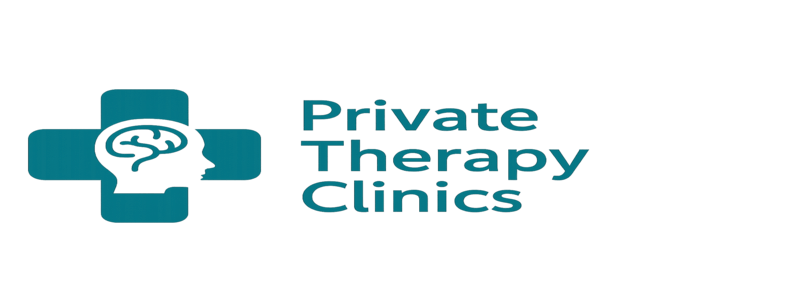
For many young adults, anxiety does not strike suddenly. It quietly permeates the minor concerns of self-comparison, decision-making, and the never-ending quest for stability. However, therapy—which many therapists now refer to as the journey from anxiety to agency—has emerged as a remarkably effective means for them to transition from passive worry to active control. Therapy is frequently misunderstood as a last resort.
Young people between the ages of 18 and 30 have experienced an unprecedented level of expectation and uncertainty in recent years. They must deal with shifting social norms, quick career changes, and continual online comparison. The idea of agency—the capacity to change one’s circumstances—has become especially important in the face of these pressures. Therapy teaches creativity as well as coping mechanisms. It assists young adults in realizing that although they cannot control every factor, they can control their responses, boundaries, and course.
| Aspect | Information |
|---|---|
| Topic | From Anxiety to Agency: How Therapy Helps Young Adults Reclaim Control of Their Lives |
| Focus | Emotional empowerment, self-agency, and resilience-building in young adults through therapy |
| Key Concepts | Cognitive Behavioral Therapy (CBT); Emotional Regulation; Identity Formation; Agential Stance |
| Primary Sources | Bleuler Psychotherapy Center; McPin Foundation; Alis Behavioral Health; Pattison Professional Counseling Center |
| Reference Link | Bleuler Psychotherapy Center |
People are “producers of their life circumstances and not just the products of them,” according to the late Stanford psychologist Albert Bandura, who is well-known for his research on human agency. Today’s therapy rooms find great resonance in this message. Something changes inside young adults when they recognize that they have control over their interactions with life’s chaos, not over it itself. An increasing sense of competence and serenity takes the place of anxiety.
The early phases of therapy are about recognition, according to the therapists at Bleuler Psychotherapy Center. A lot of young clients come in feeling like they’ve failed just because they’re nervous. This belief is reframed in therapy. It teaches that anxiety is an internal alarm that calls for attention rather than avoidance, and that it is not a sign of weakness. Therapists assist clients in reinterpreting anxiety as information rather than identity by using cognitive reframing, mindfulness practices, and gentle questioning.
This change in perspective can be incredibly freeing. Curiosity takes the place of helplessness. “What’s wrong with me?” is replaced with “What is my anxiety trying to tell me?” A client might discover, for example, that their restlessness results from living up to the expectations of others, or that their perfectionism is a cover for a deeper fear of rejection. These intangible feelings are given form in therapy, becoming tangible and thus controllable.
Notably, one of the most effective methods for helping young adults go through this transition is still cognitive behavioral therapy, or CBT. Cognitive behavioral therapy (CBT) assists people in recognizing faulty thought patterns and connecting them to behavioral and emotional reactions in order to prevent the mind’s automatic catastrophizing from getting out of control. A student who once thought that failing one exam would be the end of their life starts to realize that failure is a singular occurrence rather than a reflection of their value as a person. These small mental changes add up to emotional resilience over time, which is a skill that is remarkably resilient throughout life.
Relationships, not technique, are the most transformative element of therapy. Therapy frequently provides young adults who feel invisible or rejected elsewhere with their first taste of complete, judgment-free validation. Researchers at the McPin Foundation’s Agency Project found that young clients were much more likely to participate in, recover from, and stick with treatment when they were validated—that is, when their feelings were simply believed. This seemingly insignificant act of validation conveys to the client that they are human and not broken.
The “Agential Ladder,” a five-step framework that promotes empowerment during therapy sessions, was also introduced by the Agency Project. It consists of the following steps: participation in decision-making, avoidance of objectification, validation, legitimization, and affirmation of ability. The young adult gets closer to feeling like a partner in their recovery rather than merely a patient getting treatment with each step. They go from being treated to being empowered when they reach the top of this symbolic ladder and start co-authoring their own recovery.
With this perspective, therapy becomes more about life authorship and less about managing symptoms. The young person gains the ability to control their narrative in addition to learning how to relax. This reclaiming of authorship frequently permeates relationships, employment, and creative endeavors outside of the therapy setting. A recent graduate paralyzed by uncertainty may finally submit job applications, not because fear went away but because courage became louder; a young woman once immobilized by social anxiety may resume painting.
It’s interesting to note how many famous people have openly echoed this change. Billie Eilish, a singer who started therapy at the age of 15, has said that discovering the causes of her anxiety “helped me stop being scared of my own mind.” In a similar vein, actor Michael B. Jordan referred to therapy as “a training ground for clarity,” describing how developing emotional control improved his relationships and career. These well-publicized admissions have contributed to the normalization of therapy among younger audiences, positioning it as a sign of growth rather than crisis.
The flexibility of today’s therapeutic environment is what makes it so novel. Mental health support is now much more accessible and less daunting thanks to digital therapy sessions, mindfulness-based interventions, and hybrid counseling models. Because of this inclusivity, agency is accessible to everyone who is prepared to take the initial step toward self-awareness, rather than being limited to the wealthy and privileged.
Therapists frequently observe that anxiety inherently decreases as agency increases. With increasing confidence, clients start establishing boundaries, making thoughtful decisions, and facing avoidance patterns. This is not to say that anxiety goes away; on the contrary, it becomes proportionate. The difficulties of life still exist, but they no longer control a person’s every action. “Therapy doesn’t erase fear; it teaches you how to carry it while still walking forward,” as one Bleuler clinician succinctly put it.
This shift toward psychological agency heralds a quiet revolution in the larger cultural context. Young adults were advised for years to just “toughen up” or “push through.” Through therapy, they are now discovering that strength is about reflection, regulation, and re-engagement rather than suppression. They are discovering that being in charge doesn’t entail having complete control; rather, it entails understanding what belongs to you and what you should let go of.
One particularly poignant example is provided by a college student who, following months of cognitive behavioral therapy sessions, characterized her change as “learning to pilot my own mind.” She had integrated anxiety, not eradicated it. She remarked, “It feels like the waves used to toss me.” “I can steer now.” This is exactly what agency is all about—participation, not perfection.
In the end, therapy gives young adults intimacy with themselves rather than stress immunity. It re-establishes their connection to the voice that says, “You have choices,” beneath the cacophony. They rediscover their own capacity for compassion, change, and decision-making with every session.
Therapy helps them regain the trust that anxiety most commonly robs them of by acknowledging their difficulties, granting legitimacy to their feelings, and teaching them how to collaborate to find solutions. Even though the process is gradual—and occasionally excruciating—its effects last a lifetime. People who have previously sought therapy to “fix” their anxiety frequently come away with a deeper sense of self-worth, competence, and control over their own path.
Therefore, it is not because their anxiety went away overnight that young adults today describe therapy as “life-changing.” It’s because, astonishingly, they stopped allowing it to control their decisions. They literally started acting on their own initiative. And they discovered not only peace but also control in that reclaimed area between freedom and fear.

